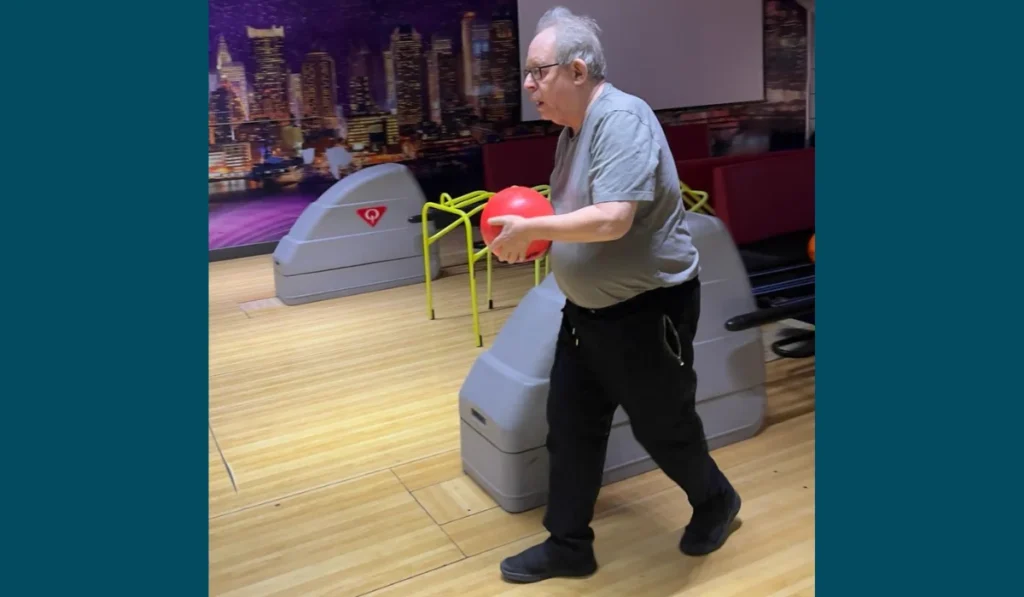It might be difficult to remain active and interested as we become older.
Activities for old people in care homes offer meaningful ways to connect, stay cognitively alert, and enjoy social time.
Residents can participate in group and one-on-one activities that genuinely interest them, resulting in a lively and friendly environment.
Table of Contents
Why Care Home Activities Matter?
Meaningful activities in care homes are necessary for the well-being and happiness of older adults. These activities keep residents socially connected and also keep their mind and body active. They need to have chances to connect with others, enjoy hobbies, and find a sense of purpose.
In care homes, residents can enjoy:
- Group Activities: Social gatherings that bring friendship and connection.
- One-on-One Time: Personalised activities based on individual interests.
Physical activities help with balance, coordination, and muscle strength, reducing health risks and supporting clear thinking. Meaningful activities also:
- Build Confidence: Helping residents feel engaged and capable.
- Support Memory and Thinking: Offering mental stimulation.
- Promote Restful Sleep: Reducing restlessness and improving relaxation.
- Provide Structure and Purpose: Particularly valuable for residents with dementia.
This article discusses a few important and beneficiary care home activity ideas. You can find additional resources from the NHS Mental Wellbeing.
Indoor Activities To Do In A Care Home

| In care facilities: indoor activities are a great method for one to express themselves, stay active, and socialise. | By promoting: creativity, relaxation, and mental stimulation, these activities improve the mental and physical health of residents. |
Creative Arts
Residents have the opportunity to express themselves in a vibrant way using creative means like painting, drawing, and card-making. By creating scrapbooks or decorating greeting cards, residents may cherish memories and make presents for family and friends.
These types of activities lift mood, reduce tension, promote self-expression, and cultivate a feeling of achievement.
Crafts and Hobbies
Sewing, knitting, jewellery making, and flower arrangement are all enjoyable and productive hobbies. These activities strengthen hand-eye coordination and assist in retaining fine motor abilities, while also providing relaxation and enjoyment.
Residents can create products to keep or give, giving every product personal value and encouraging a sense of responsibility.
Explore our Adult Care FAQs to get your questions answered.
Sensory and Relaxation Activities
Sensory activities are designed to create calm, soothing experiences. A sensory room (if available) provides soft lighting, calming sounds, and tactile elements, creating a comfortable atmosphere. Hand massages or nail services further support relaxation, easing tension and promoting comfort.
These experiences are particularly beneficial for residents with dementia or sensory sensitivities, helping them feel secure and grounded.
Board and Card Games
Classic games like bingo, board games, and jigsaw puzzles offer social engagement and mental challenge. Whether it’s a round of bingo, a strategy game, or a relaxing puzzle, these games help residents connect and keep their minds sharp. Quizzes and trivia games also offer a fun way to stimulate memory, spark conversation, and encourage friendly competition.
Music and Singing Sessions
Music has a unique way of uplifting spirits and connecting people. Residents can enjoy sing-alongs, listen to visiting musicians, or take part in music-themed quizzes. Familiar songs bring back pleasant memories and create a joyous mood. On the other hand, live music pulls the outside world into the home, thus creating moments of shared joy and connection.
Reading and Storytelling Groups
Reading clubs and storytelling circles give chance to residents to share stories, favourite books, and memories. Reminiscence sessions provide a space for residents to talk about their life experiences, strengthening bonds with others.
These groups are a great way to keep the mind engaged and give residents an opportunity to express themselves in a warm, safe environment.
Wellness and Fitness
Simple and light physical activities like chair aerobics, yoga, or even dance sessions help residents stay active and mobile. These exercises are designed to be safe and comfortable, improving balance, flexibility, and circulation. Regular fitness routines support physical health, reduce stress, promote a positive outlook and create a sense of achievement.
Pampering and Spa Days
Spa days offer a relaxing break, with manicures, pedicures, and haircuts provided by visiting stylists. These treatments help residents feel refreshed, and the personal care involved can develop self-esteem. Pampering days create a sense of well-being, adding comfort and a touch of luxury to the daily routine.
Educational Talks and Armchair Travel
Educational talks and “armchair travel” sessions allow residents to learn something new or virtually visit different places. Visiting speakers may give talks on various topics of interest, from history to nature. Armchair travel days offer the chance to “visit” countries around the world through images, videos, and stories, keeping curiosity alive and sparking conversation among residents.
Outdoor Activities To Do In A Care Home

| Residents in care homes can benefit from: fresh air, sunshine, and a change of scenery through outdoor activities. | All of these activities offer: social engagement, physical benefits, and a close connection to nature, resulting in a balanced, uplifting experience. |
Gardening and Outdoor Clubs
Gardening activities, such as planting flowers or growing vegetables, allow residents to spend time with nature and enjoy the satisfaction of watching their work blossom.
Gardening helps:
- in relaxation,
- reduces stress, and
- provides a sense of achievement.
Whether it’s tending to flower beds or planting vegetables, gardening creates a peaceful environment where residents feel connected to the earth.
Gentle Exercise and Walking Clubs
Group walks, light stretching, and tai chi sessions encourage residents to stay active in a safe, calming setting.
Gentle exercise supports:
- flexibility,
- balance, and
- mobility,
which are fundamental for maintaining independence. Spending time outdoors also offers the benefits of fresh air and natural light, both of which can improve mood and overall well-being.
Social Events and Gatherings
Outdoor events like garden parties, barbecues, and summer fetes offer a lively, social environment where residents can enjoy themselves with family, friends, and fellow residents.
These gatherings build a sense of community, connections and friendships in a fun, relaxed atmosphere. Events bring joy and help residents feel part of a caring, vibrant community.
Outdoor Games and Lawn Sports
Games such as lawn skittles, golf target, and other gentle lawn sports offer residents light exercise and a sense of friendly competition.
These activities are:
- accessible to residents of all abilities,
- encouraging physical movement and
- social engagement in a relaxed environment.
Outdoor games are a wonderful way for residents to have fun, laugh, and stay active.
Pet Therapy
Visits from therapy animals, including dogs, alpacas, or even Shetland ponies, create warm and memorable moments for residents.
Interacting with animals is known to reduce anxiety, provide comfort, and promote a sense of happiness. Pet therapy brings a unique kind of companionship and connection, helping residents feel loved and uplifted.
Picnics and Tea Dances
Organised picnics and tea dances bring the joy of socialising to the outdoors. Picnics allow residents to enjoy a simple meal in a scenic spot, while tea dances offer music and light movement, creating memorable social experiences.
These activities are both refreshing and relaxing, providing opportunities to enjoy the outdoors and make happy memories with others.
Outings to Local Attractions
Trips to nearby parks, cafes, museums, or other attractions give residents a refreshing change of scenery. These outings keep life exciting and allow residents to experience new places, supporting mental engagement and social interaction.
Whether it’s a visit to a local cafe or a trip to the museum, outings offer a chance to mix and connect with the larger community.
Nature Observation
Activities like birdwatching, nature trails, or simply sitting in a garden allow residents to immerse themselves in nature. Observing birds, plants, and trees stimulates a calming connection to the outdoors, promoting peace and relaxation.
Nature observation is particularly soothing and provides residents with time for reflection and mindfulness.
Special Interest Trips
Care homes may arrange outings that reflect individual residents’ interests, such as visiting a favourite football club, a local beach, or a public garden.
These trips show respect for each resident’s unique preferences, adding a personal touch to their care.
Special interest trips allow residents to engage with places they love, providing joy, excitement, and a deep sense of individuality.
Tips for Choosing the Right Activities for Each Resident

Choosing activities that match residents’ interests, abilities, and needs, helps create a meaningful and enjoyable environment. Here’s how care homes can provide personalised, engaging activities:
Consider Individual Preferences and Abilities
Residents have a variety of interests and abilities. Some may enjoy creative pursuits, like painting or crafting, while others may prefer social activities, gentle exercise, or outdoor events.
Activities that align with these interests help residents feel comfortable, motivated, and fulfilled. By choosing activities that residents truly enjoy, care homes create a warm environment that encourages everyone to participate at their own pace.
Role of Activity Coordinators
Activity Coordinators play an essential role in making activities enjoyable and accessible. They get to know each resident, understanding their likes, dislikes, and physical abilities.
Coordinators organise a mix of group and one-on-one sessions, providing options that suit all levels of mobility and cognitive function. By carefully selecting activities, coordinators bring out the best in each resident, creating a positive and engaging environment that residents look forward to each day.
Personalising the Experience
A personalised approach to activities can significantly impact residents’ well-being. For example, a resident who loves gardening might feel refreshed and happy tending to plants, while someone who enjoys quiet time might appreciate a peaceful reading session.
By offering options that reflect these individual preferences, care homes create a sense of belonging and make each day enjoyable and meaningful.
In short, activities that suit each resident’s personality, energy, and abilities provide a sense of purpose, comfort, and community. This thoughtful approach contributes to a fulfilling, enjoyable life in the care home, where every resident can feel valued and involved.
Conclusion
Fun, meaningful activities for old people in care homes make a big difference in the lives of older adults. These activities, from social events to arts and physical exercises, help residents stay active, feel happier, and build friendships.
At Metro Care UK, we work hard to create a warm, friendly place where residents feel at home. Our approach aligns with the best practices for adult social care standards as outlined by the UK government’s guidelines. Our adult care and support in London focuses on helping each person feel valued, comfortable, and connected.
If you’d like to learn more about our Adult Day Care Facilities or Supported Living for Adults with Learning Disabilities, reach out to Metro Care UK today. We’re here to make life brighter for you and your loved ones.
Frequently Asked Questions on Activities for Older Adults in Care Homes
What is the best activity for old people?
The best activities for older adults vary depending on their interests and abilities.
Engaging activities often include:
– gentle exercises,
– gardening,
– music sessions, and
– crafts.
Activities like these help keep the mind active, encourage social connections, and maintain physical health. Simple pastimes, like reading or storytelling, can also bring joy and comfort. The key is choosing activities that bring enjoyment and offer a sense of purpose, allowing each person to feel connected, fulfilled, and at ease.
How do you plan an activity in a care home?
Planning activities in a care home involves understanding residents’ interests and needs.
Start by gathering ideas from:
– the residents,
– then choose activities that are safe,
– accessible, and
– enjoyable for all involved.
A mix of group and one-on-one activities means everyone has options that suit their abilities. Setting a comfortable pace and preparing any necessary supplies ahead of time helps the activity run smoothly. Lastly, always encourage participation but allow residents to join in at their own comfort level.
How can you create a fun atmosphere in a care home?
Creating a fun atmosphere involves engaging activities that bring residents together in a warm, lively setting.
Regular social events, like game nights, music sessions, and themed parties, encourage laughter and connection.
Personalising activities to suit residents’ interests and celebrating special occasions, like birthdays or holidays, adds excitement. Staff can help by being friendly, approachable, and joining in the activities. By creating a cheerful, welcoming environment, care homes make each day more enjoyable for residents.
What are some meaningful activities in social care?
Meaningful activities in social care include those that encourage self-expression, connection, and well-being. Examples include arts and crafts, which allow creativity, and reminiscence sessions that help residents share memories.
Physical activities, like chair yoga or gentle walking, promote health, while group activities, such as book clubs or gardening, develop a sense of community. These activities not only keep residents engaged but also support mental and physical health, providing a rewarding experience.
What are the signs of a good care home?
A good care home feels warm, welcoming, and safe.
Key signs include clean, comfortable spaces, friendly and attentive staff, and a variety of meaningful activities. Residents should have choices in daily routines and opportunities to socialise.
Family involvement is encouraged, and personal care is handled with respect. A good care home will also be transparent about its care standards, building an atmosphere where residents feel valued and family members feel reassured.

